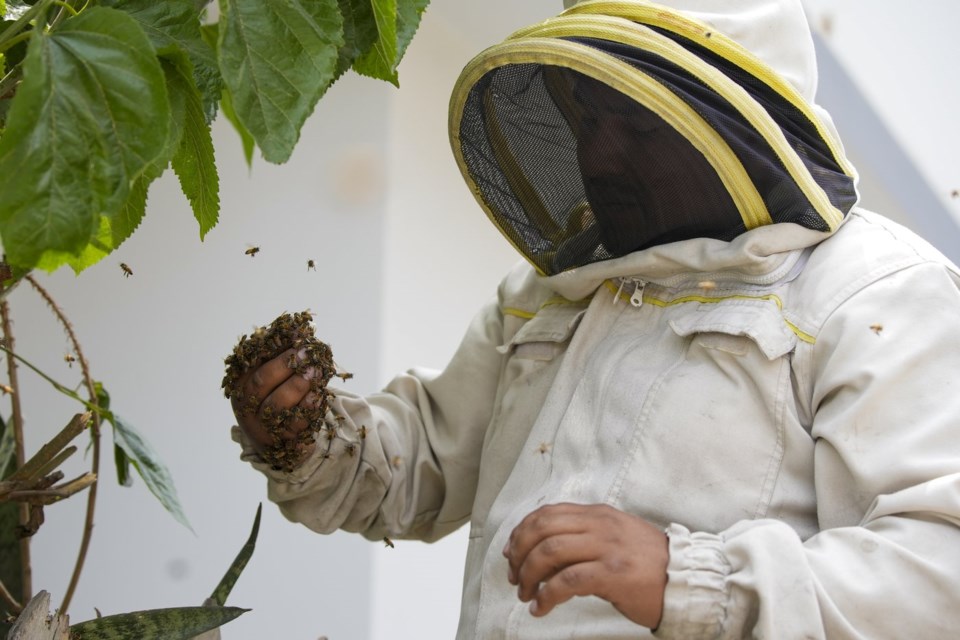LIMA, Peru (AP) — Alfredo Santiago has a unique job in 's capital city of Lima: he's a bee rescuer.
The 35-year-old began as a beekeeper but added rescuing the to his services. He often checks his cellphone for messages from people seeking help removing hives from house windows, playgrounds or even graveyards.
“I do it out of passion, to defend these animals that are so important to nature,” he said.
Once he has gotten enough requests, Santiago dons his white, one-piece beekeeper suit, takes a smoker and a wooden box and hits the streets of Lima, a city of 10 million.
Sometimes Santiago arrives at a location and people have already killed the bees. But when he’s able to rescue them, he takes them back to his home on the outskirts of Lima, where he lives as a beekeeper and sells honey.
He is apparently the only person in the city doing the job for free. “It is volunteer work. Some plant trees, others collect abandoned dogs or cats,” said Santiago, whose parents are also beekeepers.
“I am the driver, the one who carries the box, the operator, the one who (secures himself with) harnesses, the one who takes the photo and uploads it to the networks,” he said as he checks out the dark green car that he drives around the city.
Recently, Santiago had to motor more than 80 kilometers (50 miles) from one side of Lima to the other to find a hive in a house's garden. He also went to a graveyard after a man who had gone to bury his mother was stung by some bees, and they discovered that the insects had found a place on a wooden coffin.
Santiago says he gets around 100 requests a year to come and remove bee hives, and he estimates that he has rescued around 4 million bees since he started his unpaid job in 2020. People had begun to learn about him on social media.
Life for bees in Lima is not easy because the heavily populated city doesn't have lots of parks or green spaces.
On the large patio of his house, Santiago has more than two dozen green wooden boxes in which more than 400,000 bees live and “recover” after being rescued. There is honey over two plates, while some drops of water come out of a tap that fall on a piece of wood. All for the bees. After a few months, sometimes six, he takes them to the Andean forests of Peru, more than 225 kilometers (140 miles) from Lima, where his parents live and also take care of bees.
It's a family affair: Santiago said he's already thinking of buying a small beekeeper's suit for his 3-year-old daughter.
Franklin Briceño, The Associated Press



